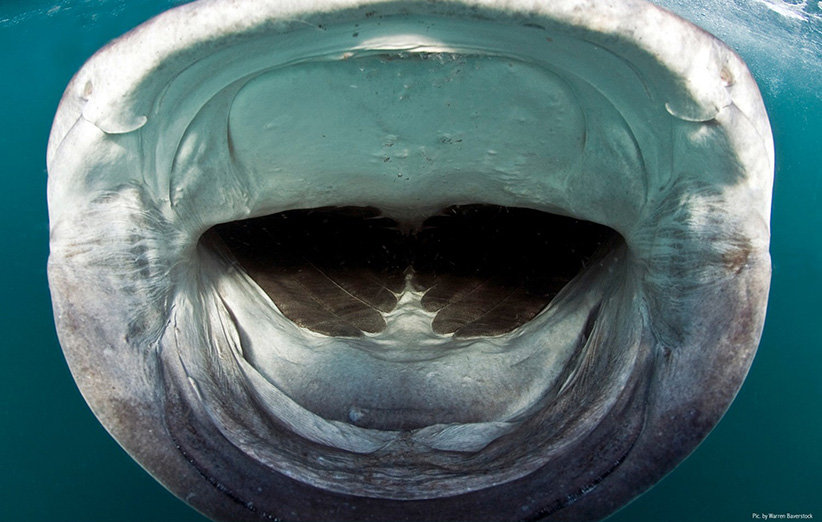Whale sharks subject to harassment in Iran’s southern waters

The whale shark is aptly named. Bigger than any other shark, it is closer in size to giant whales but it is the largest fish in the sea, can grow to 12m in length and weigh up to 12 tons. With its giant mouth and large gill slits, the whale shark is a filter feeder.
The whale shark (Rhincodon typus) is aptly named. Bigger than any other shark, it is closer in size to giant whales but it is the largest fish in the sea, can grow to 12m in length and weigh up to 12 tons. With its giant mouth and large gill slits, the whale shark is a filter feeder.
Sharks more than any other predator triggers a primeval fear in humans of being eaten alive, but last week an Iranian young boy jumped on the back of a whale shark in the water of southern city of Bushehr to ride for a while! It is one of those experiences that never happens for many in reality. Some people cheered and some criticized him harshly. Many said he didn't disturb the animal and some took it as a violation against animal rights. In fact, there is always the possibility of such odd behaviors by humans around the world not just in Iran but also in the United State of America.
In the recent occurrence, some people referred to the weight difference between human (average 83.6 kg) and whale sharks (up to 12 tons) and justified the deed with the size of the big shark whale. The big problem is not weight; the level of the stress that the animal might endure and infections that can be transmitted by human to vulnerable whale sharks are indisputably the challenges the animal will face.
Whale sharks are persecuted across their range by these retaliatory stresses due to misunderstanding and the fear they cause for fishermen. Studies indicate that stress may disperse them from safe habitats.
The whale shark, Rhincodon typus is believed to reach over 15 m and is planktivorous (feeds on microscopic organisms floating in the sea). Each species has specific characteristics in terms of behavior, habitat use, diet, etc. There are many gaps regarding our understanding of whale sharks in the region.
However; there are many researches around the world. For example, Sierra Madre Divers have 20 years of dive service excellence, they are also working on whale shark conservation. They referred to wrong beliefs in which negative whale shark interactions simply ignored by unknown people. These experts refused folk tales and mentioned: "Compliance whale sharks' interaction regulations were monitored in Philippines by Large Marine Vertebrates Research Institute Philippines (LAMAVE) for 3,849 minutes. The whale shark is a protected species in the Philippines and Under Republic Act 9147, an Act for the conservation and protection of wildlife resources and habitats in the Philippines. It is illegal to harass them. Surveys lasted for 20 minutes or until the shark moved out of sight. Over the course of the study, they recorded 1823 ‘active touches’ of the whale sharks. That equates to 29 touches per hour. Results showed that in 89% of the events the contact is initiated by one of the feeders that touches the mouth of the shark, or places his foot in between the shark and the hull of the boat. This is usually to prevent the shark from bumping the boat, and pushing into it whilst it is getting fed. The feeders have also been observed to occasionally stroke the sharks and push them away in an attempt to discourage the shark from feeding because they want to conserve the food for the next group of guests next day. This behavioral modification might also have inherent risks for whale sharks who travel outside of protected waters and wrongly approach shark fishing boats, as whale sharks are normally a highly migratory species. Excessive friction from rubbing against the side of feeder boats is the cause of many injuries to whale sharks. These lesions that appear mostly white and have a spongy consistency, are the result of the reaction of the skin around the mouth to repeated abrasion. They can also be red and inflamed."
Utmost ignorance
Convention on the Conservation of Migratory Species of Wild Animals (CMS) is an environmental treaty under the aegis of United Nations Environment Program (UNEP) which provides a global platform for the conservation and sustainable use of migratory animals (e.g. whale sharks) and their habitats. Authorities of Department of the Environment of Iran (DoE) as a CMS member still maintained a discreet silence despite being expected to contemplate at least a proper media reaction. Only 100 days remain until a major global meeting on wildlife (UN wildlife Conference), then keeping silence against the recent incident in Bushehr coastlines just gaining ground of ignorance to environmental international treaties.
Not all sharks travel far afield. Some prefer to stay close to home, and swimming in only one small area. But others such as whale sharks are migratory, however our knowledge is so poor especially in Persian Gulf. David Robinson from Heriot-Watt University is one of the great experts who managed a related project "The ecology of whale sharks in Persian Gulf and Gulf of Oman". This project initiated in 2010 and revealed many important factors till now.
There is no doubt that population decline of whale sharks in our region is related to anthropogenic factors. As similar projects go on by our neighbors, Iran just keeping its discreet silence, and the biggest threat replicated. Conflict with whale sharks has escalated in our region, resulting in extermination of sharks in many parts of their range. The biggest threats by far to sharks are the demand for shark products, including meat and fins, which is increasing in region and more important lack of collaboration. It is crucial to cooperate and conduct research together or at least trying to act on international treaties to protect wildlife heritage.
